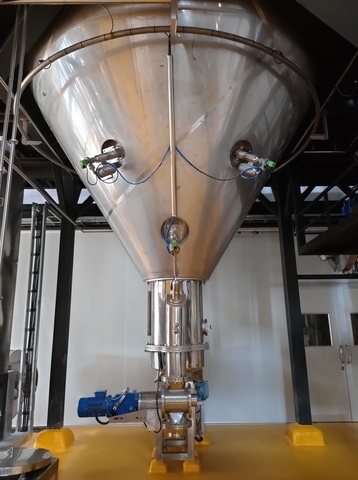
 Data Structure
Data Structure Networking
Networking RDBMS
RDBMS Operating System
Operating System Java
Java MS Excel
MS Excel iOS
iOS HTML
HTML CSS
CSS Android
Android Python
Python C Programming
C Programming C++
C++ C#
C# MongoDB
MongoDB MySQL
MySQL Javascript
Javascript PHP
PHP
- Selected Reading
- UPSC IAS Exams Notes
- Developer's Best Practices
- Questions and Answers
- Effective Resume Writing
- HR Interview Questions
- Computer Glossary
- Who is Who
Microencapsulation-Technology and Application
A Farther Insight
Microencapsulation is a technology that has been used for several decades in the pharmaceutical, food, and cosmetic industries. It involves the process of enclosing tiny particles or droplets within a protective shell to create a new substance with unique properties.
The technology has gained a lot of attention over the years due to its numerous benefits, including controlled release, increased shelf life, targeted delivery, and improved product stability. In this article, we will delve deeper into the concept of microencapsulation technology and its applications.
Overview of Microencapsulation Technology
Microencapsulation technology involves the creation of tiny capsules that are usually between 1 and 100 microns in diameter. These capsules are made up of a shell material that surrounds a core material. The shell material can be made up of natural or synthetic polymers, lipids, or proteins. The core material, on the other hand, can be a liquid, solid, or gas.
The process of microencapsulation is achieved through various techniques, including spray drying, coacervation, and fluid bed coating. Each technique has its unique advantages and disadvantages, and the choice of technique depends on the desired properties of the final product.

Spray Drying Technique
Spray drying is one of the most commonly used techniques in microencapsulation technology. The technique involves the conversion of a liquid solution or suspension into dry powder particles by spraying the solution into a hot air stream. The hot air stream causes the solvent to evaporate, leaving behind dry particles.
Coacervation Technique
The coacervation technique involves the separation of a dissolved or dispersed polymer into two phases through the addition of a non-solvent or a polyelectrolyte. This results in the formation of a coacervate phase, which contains the core material.
The coacervate phase is then coated with shell material, and the core material is trapped within the coacervate droplets. The droplets are then hardened by cross-linking or solvent evaporation, resulting in the formation of microcapsules.
Fluid Bed Coating Technique
The fluid bed coating technique involves the deposition of a shell material onto a core material that is fluidized in a chamber. The core material is suspended in a fluid bed, and the shell material is sprayed onto the core material.
The sprayed shell material forms a thin layer around the core material, and the process is repeated several times until the desired shell thickness is achieved. The coated particles are then hardened through cross-linking or solvent evaporation, resulting in the formation of microcapsules.
Applications of Microencapsulation Technology
The use of microencapsulation technology has revolutionized several industries, including the pharmaceutical, food, and cosmetic industries. Below are some of the applications of microencapsulation technology.
Pharmaceutical Industry
The pharmaceutical industry has been one of the biggest beneficiaries of microencapsulation technology. The technology has been used to improve the effectiveness and safety of drugs through controlled release and targeted delivery.

Controlled Release
Microencapsulation technology has been used to control the release of drugs into the body. This is achieved by enclosing the drug within a shell material that releases the drug at a predetermined rate. The release rate is controlled by the thickness of the shell material and the properties of the shell material.
Targeted Delivery
Microencapsulation technology has also been used to target drugs to specific parts of the body. This is achieved by coating the drug with a shell material that is sensitive to the environment of the target area. The shell material releases the drug when it reaches the target area, increasing the effectiveness of the drug and reducing its side effects.
Improved Stability
Microencapsulation technology has also been used to improve the stability of drugs. Enclosing drugs within a shell material protects them from environmental factors such as moisture, heat, and light, which can degrade the drug. This results in a longer shelf life for the drug and reduces the need for frequent dosage adjustments.
Food Industry
Microencapsulation technology has also found its way into the food industry, where it has been used to improve the taste, texture, and nutritional value of food products.
Improved Flavor
Microencapsulation technology has been used to improve the flavor of food products by encapsulating flavors and aromas. Encapsulating these flavors and aromas protects them from environmental factors, ensuring that they are not lost during processing, storage, or transportation. This results in improved flavor and aroma of the final product.
Improved Texture
Microencapsulation technology has also been used to improve the texture of food products. Encapsulating ingredients such as starches and proteins improve their functionality, resulting in a smoother texture of the final product.
Nutritional Supplements
Microencapsulation technology has also been used to improve the bioavailability of nutritional supplements such as vitamins and minerals. Encapsulating these supplements protects them from degradation, increasing their stability and shelf life. This ensures that the supplements remain effective and provide the intended health benefits to consumers.
Cosmetic Industry
The cosmetic industry has also been a beneficiary of microencapsulation technology. The technology has been used to improve the performance and stability of cosmetic products.
Controlled Release
Microencapsulation technology has been used to control the release of active ingredients in cosmetic products. Encapsulating these ingredients protects them from degradation, ensuring that they remain effective over an extended period. This results in improved performance and longer-lasting effects of the final product.
Targeted Delivery
Microencapsulation technology has also been used to target active ingredients to specific parts of the skin. Encapsulating these ingredients with a shell material that is sensitive to the environment of the target area ensures that the active ingredients are released only when they reach the target area. This results in improved effectiveness of the product and reduces the risk of adverse effects.
Improved Stability
Microencapsulation technology has also been used to improve the stability of cosmetic products. Encapsulating active ingredients protects them from environmental factors such as light, heat, and moisture, ensuring that they remain effective over an extended period. This results in a longer shelf life for the product and reduces the need for frequent application.
Conclusion
In conclusion, microencapsulation technology has revolutionized several industries, including the pharmaceutical, food, and cosmetic industries. The technology has been used to improve the effectiveness, safety, and stability of products, resulting in improved performance and longer-lasting effects.
The choice of microencapsulation technique depends on the desired properties of the final product, and each technique has its unique advantages and disadvantages. Microencapsulation technology is expected to continue playing a significant role in the development of new products and the improvement of existing products in various industries.

